There has been discussion here before about the correct way to rethrow an exception. This question, instead, is about how to get useful behavior from Visual Studio when using rethrow.
Consider this code:
static void foo() {
throw new Exception("boo!");
}
static void Main(string[] args) {
try {
foo();
} catch (Exception x) {
// do some stuff
throw;
}
}
The exception that comes out has the correct stack trace, showing foo() as the source of the exception. However, the GUI Call Stack window only shows Main, whereas I was expecting it to show the exception's call stack, all the way to foo.
When there is no rethrow, I can use the GUI to very quickly navigate the call stack to see what call caused the exception and how we got there.
With the rethrow I'd like to be able to do the same thing. Instead, the call stack that the GUI shows is of no use to me. I have to copy the exception details to the clipboard, paste it to Notepad, and then manually navigate to whichever function of the call stack I'm interested in.
By the way, I get the same behavior if I add [MethodImpl(MethodImplOptions.NoInlining | MethodImplOptions.NoOptimization)] or if I change the catch to just catch (Exception).
My question is: given that the code I have uses rethrow, can someone suggest a convenient way to navigate the call stack associated with the exception? I'm using Visual Studio 2010.
